
Homeland – China, India, Japan, Sakhalin and the Far East.
Anafalis has been cultivated as a cultivated garden plant since the 16th century. Modern gardeners rarely plant this plant on the site, even though it pleases the eye with its decorative effect for several months. Among other species, the pearl anafalis flower is in greatest demand among gardeners.
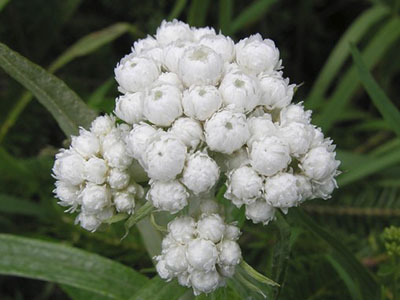
Its silvery inflorescences really resemble pearls. With the help of such a spectacular and unpretentious flower in the care, you can create the most unusual and luxurious compositions on the site.
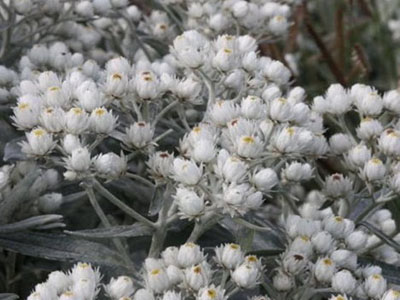
Anafalis – decorative perennial for the garden
Anafalis is an ornamental perennial with a woody, powerful, rapidly growing rhizome. The stems are erect, solitary, their height varies from 50 to 100 cm, practically without branching, white, with ashy pubescence.
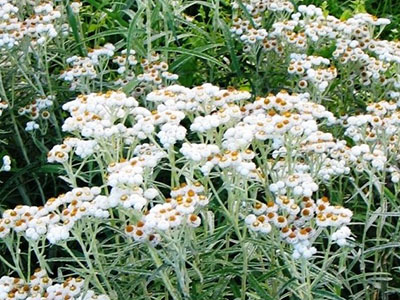
Numerous leaves are linear-lanceolate, leathery, green above, covered with white bloom, below – light with gray pubescence. The lower leaves die off by the beginning of flowering. Baskets are miniature, up to 8 mm, collected in inflorescences – shields. Bracts are multi-layered and can be white, cream, pink or silver. The flowers themselves are yellow. Blooms in August – early September. The fruit is a small ribbed achene about 6 mm long. Inside are dusty seeds.
In one place, the flower is grown for no more than 3 years, as the plants quickly age and lose their decorative appearance.
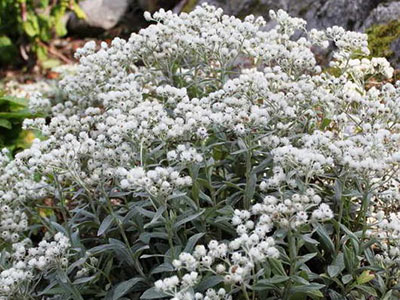
Under natural conditions, the anafalis plant grows in a climate of temperate latitudes, settles in coniferous and mixed forests, on mountain elephants, dry and stony soils.
This culture looks good in various country-style garden compositions or on artificial rocky areas of the garden, as well as on large alpine slides.

Planted with partners perennials – flowers of red and blue shades. It looks spectacular against the background of stones, therefore it is used to create rock gardens and rockeries.
Dried inflorescences are suitable for making winter bouquets. To make such a bouquet, you need to choose the time when most of the inflorescences have blossomed and cut off the shoots. Tie the plants into bouquets and put them in a dry, dark place to dry.
The photo of anafalis flowers below shows how unusual and beautiful they look on the garden plot and what compositions can be made with their help:


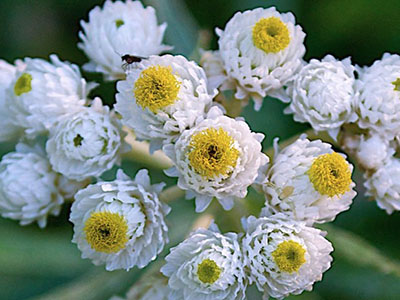
Types of anafalis flower with photo
The genus includes about 35 species, below is a description of anafalis and a photo of those that are used today in gardening:
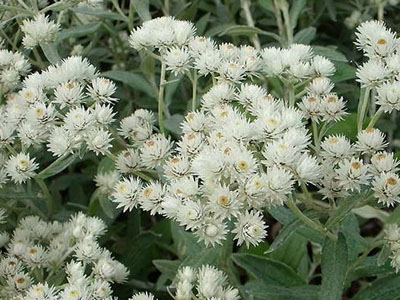
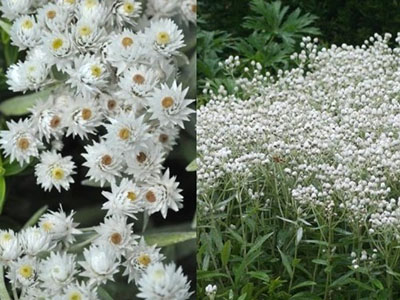

Anafalis pearl or “pearl legs” (Anaphalis margaritacea) – a herbaceous plant up to 50 cm high. The stems are erect, slightly branched, with a slight felt pubescence. The leaves are lanceolate, covered with white hairs, giving them a silvery tint. The inflorescences are small, white with a pearl hue, bloom in late summer.
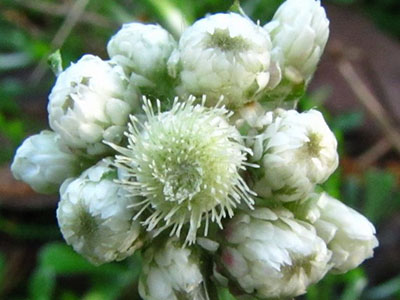
The species is frost resistant. It grows rapidly, interfering with the growth of neighboring plants. For this reason, in the garden it is grown at a fairly large distance from other crops.

Anafalis Nepalensis (Anaphalis nepalensis) is a perennial ground cover plant about 30 cm long. Leaves are petiolate, light green in color, with slight pubescence on the surface, basal – oval, stem – lanceolate. The flowers are collected in complex inflorescences – shields of 5 – 15 pieces each.
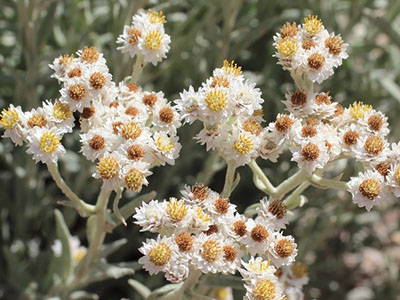
Petals are white, beige, cream. Flowering of this species begins in July-August, depending on the region. Requires shelter for the winter.
Three-veined anafalis (Anaphalis triplinervis) – a perennial herbaceous plant with a straight stem about 50 cm long. The leaves are numerous, gray in color, narrowly lanceolate, three-toed, large. The flowers are white, cream, silver, collected in corymbose inflorescences,
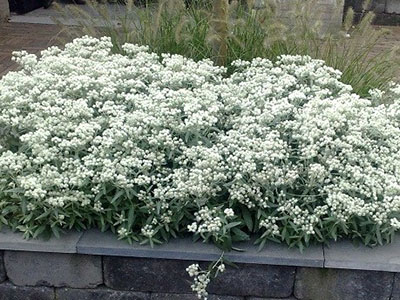
In ornamental gardening, the type of anafalis yedsky is also known.
Anafalis plant cultivation and care
Anafalis is a herbaceous plant, ideal for open ground, so its cultivation is always successful for all gardeners. This culture requires a minimum of care. But those who want the flowers to look fresh and well-groomed try to adhere to some rules for its maintenance.
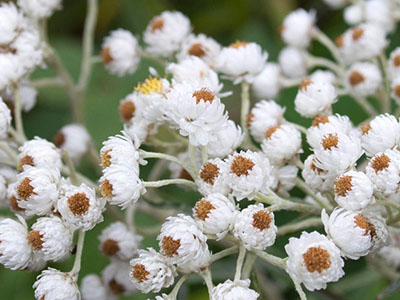
Anafalis is photophilous, develops well and blooms in open sunny areas, but can tolerate slight shading. Needs constant ventilation.
The soil prefers light, sandy, well-drained, moderately dry, with neutral acidity. However, the flower will also grow in poor, dry sandy and rocky soils. This may affect its decorative qualities. The plant is drought-resistant and thermophilic.
Watering adult plants should be moderate. Anafalis easily tolerates drought and prolonged rains. Young plants need abundant watering, especially on hot days. But you should not flood them, since waterlogging is fraught for them with rotting of the roots and the death of the entire bush. So that there is no stagnation in the soil, after watering it is necessary to loosen it around the flower.
When growing this crop, it is recommended to mulch the soil around it with dry leaves or fine gravel so that water does not stagnate on the surface.
Top dressing is also included in the care of anafalis, for this it is enough to apply full mineral fertilizer 1-2 times per season.

To maintain a neat appearance of the plant throughout the spring-summer season, faded inflorescences must be removed in a timely manner. This work contributes to the formation of new shoots. With the onset of autumn, the stems are completely cut off at the root. Once every 4 years, the bushes are seated.
Reproduction of anafalis
The culture is propagated in three ways: by sowing seeds, cuttings and dividing the bush. The seed method is less promising than others, however, there are those among gardeners who consider it the most effective.
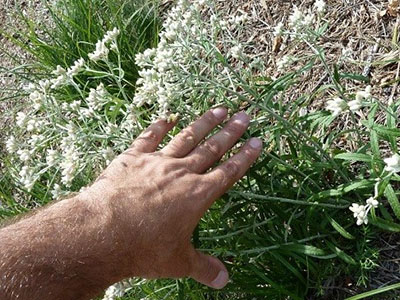
To grow seedlings, seeds are sown in early March or closer to May in small containers with light, nutritious soil. They are not sprinkled with earth after sowing, as this is not necessary. From above, the containers are covered with glass or film, thereby creating a home greenhouse. Crops are aired daily and sprayed with water from a spray bottle. The grown seedlings dive into boxes or outdoor greenhouses. Planted in the ground in the fall or spring of the following year. After planting anafalis in open ground, the young plant is regularly cared for, as described above.
Reproduction by dividing the bushes is carried out in autumn or spring. The bush of an adult plant is dug out completely with the root system very carefully, trying not to damage it. The plant is divided so that at least 3 shoots remain on each part. Delenki are planted at a distance of 30-45 cm from each other.

Propagation by cuttings is carried out throughout the summer season. To do this, take young green shoots with a length of at least 10 cm. The lower cut is made under the kidney at a distance of 1 cm, the upper one above the kidney, leaving a distance of 2 cm. The leaves are removed and only the top two are left. The cuttings are placed in wet sand and covered with a film. You can put them under glass. For the winter, greenhouses are cleaned in a cool place, and in spring, in warm weather, they plant cuttings of anafalis and take care of them.







